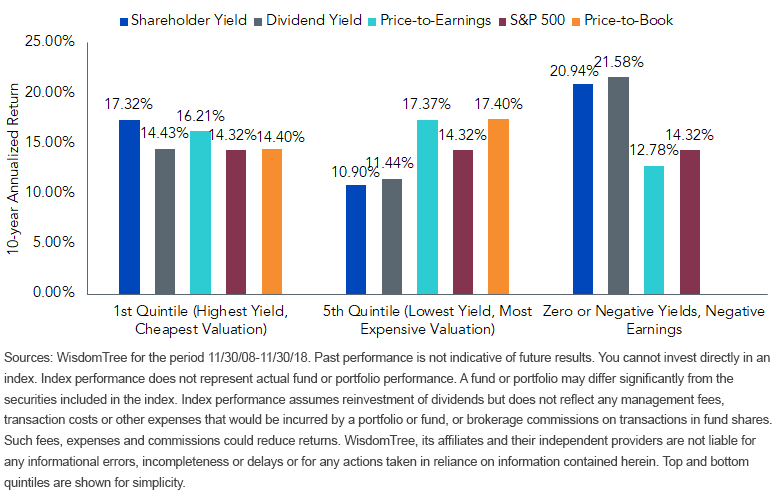Please Repurchase Responsibly


Few topics generate as much debate as share repurchases. Skeptics of buybacks argue this form of returning capital can be:
- Done for the wrong reasons—critics argue managements are too near-sighted when they use buybacks to support share price, offset option dilution and share issuance, or as the only way to boost quarterly earnings per share (EPS).
- Mistimed—critics claim companies only repurchase their shares at high prices and stop during market downturns.
- Capital mismanagement—some investors believe excess cash should be reinvested for growth, and that a company lacking investment opportunities is not worth investing in.
- Inferior to dividends—share repurchases are viewed by some as low-commitment in comparison to regular dividends, and that they can be considered less indicative of a company’s expectations for consistent profitability.
While these buyback downsides exist, we believe it is unwise to paint all share repurchase programs with so broad a negative brush.
In fact, we have found that shareholder yield, the ratio of the sum of dividends and buybacks to market capitalization, has been among the best measures of relative value over the past 10 years—a period during which many have claimed value investing is dead!
As seen in the chart below, stocks in the highest quintile of total shareholder yields in the S&P 500 have outperformed the index by 300 basis points (bps) per year for the last 10 years. The lowest shareholder yield quintile has underperformed by 342 bps. This means the relative outperformance by the highest versus the lowest quintiles of shareholder-yielding companies has been almost 650 bps annually—for a decade.
If we remove buybacks from the shareholder yield equation and only look at dividend yield, we give up some return but still find that a higher dividend yield outperforms. Returns for the highest quintile of dividend-yielding companies outpaced the S&P 500 and the lowest quintile of dividend-yielding companies by 12 bps and 300 bps per year, respectively. In this case, inserting share repurchases into the equation adds about 300 bps in annual return, and is far from valueless.
We believe shareholder yield is a more effective measure of value than price-to-earnings or price-to-book. The least expensive quintile of stocks based on these metrics has underperformed the most expensive quintile in the last 10 years, while their outperformance versus the S&P 500 Index benchmark has lagged behind shareholder yield as a value factor.
Attribution of S&P 500 Returns by Valuation Factor

It’s also worth noting the relative outperformance by companies with zero or negative dividend/shareholder yield. This can be attributed to stronger returns over this period from growth sectors, such as technology, that typically hold a higher percentage of companies that do not pay dividends or repurchase their shares, and sometimes issue stock to finance growth.
Are the high returns to negative- and zero-yield stocks evidence that companies should retain their earnings and reinvest for growth rather than buying back shares?
We would counter that reinvesting and returning capital to shareholders are not mutually exclusive.
Well-run companies may allocate a percentage of their excess capital across internal investments, share repurchases, dividends, debt reduction, M&A and other opportunities, based on their strategic priorities and expected rates of return. Managements typically want to deploy capital first toward the priority with the highest return on investment.
Share repurchases are not an all-or-nothing decision, but timing is everything. For buybacks to create value for shareholders, the return on investment must exceed the cost of capital. One of the benefits of share repurchases is that they can be lower-commitment and more flexible than dividends.
When timed competently, share repurchases can be a tool for management to opportunistically take advantage of undervaluation in their share price. A large and unexpected buyback may also send a positive signal to investors that management is confident in future prospects and views their shares as undervalued.
Gaining Exposure to Shareholder Yield as a Value Factor
The WisdomTree Quality U.S. Shareholder Yield Fund (QSY) recognizes that combining a well-executed and opportunistic buyback with the consistency of a regular cash dividend program can create value for shareholders.
QSY invests in mid- to large-market capitalization companies in the U.S. that exhibit strong relative quality characteristics, and that return a significant amount of capital to shareholders through share repurchases and dividends.
As a quantitative active strategy, QSY combines a methodical approach to ranking stocks on their combined quality and shareholder yield scores with the added ability to apply discretion where risks or opportunities to the quantitative model are present. We just re-balanced this portfolio in December and think the characteristics may make this basket particularly attractive.
In future blog posts, we will describe the process for combining quality metrics with buybacks and dividends and how the stocks in QSY bought back, on average, 7% of their shares over the last 12 months.
QSY may be a solution for investors seeking exposure to shareholder yield as a value factor.
Important Risks Related to this Article
There are risks associated with investing, including possible loss of principal. Funds focusing their investments on certain sectors increase their vulnerability to any single economic or regulatory development. This may result in greater share price volatility. While the Fund is actively managed, the Fund’s investment process is expected to be heavily dependent on quantitative models and the models may not perform as intended. Please read the Fund’s prospectus for specific details regarding the Fund’s risk profile.


